Screams of war had had occurred where I stood. Hebrew and Assyrian arrows spraying at each other. Sling stones crushing armor and skulls. Assyrian battering rams methodically picking apart the city’s outer wall. Finally, Lachish fell.
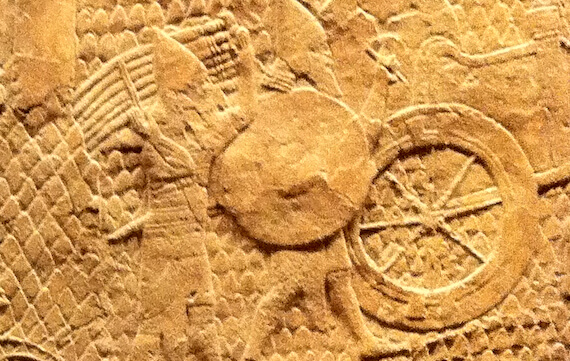
(Photo: Relief from Sennacherib’s Victory Over Lachish, in British Museum)
Of all ancient tells in the Holy Land, the Israel Antiquities Authority owns only one—Tel Lachish. It remained the most important city in the southern kingdom of Judah, except for Jerusalem.
Archaeology abundantly points to the biblical events here as historical.
Lachish, Location, Location
Guarding the southern edge of the Shephelah, Lachish served as both a customs outpost and as Jerusalem’s watchdog over invading Egypt. No one could access the Hill Country via Hebron without Lachish’s knowledge.
- The ruins atop the tell include a large, flat platform—measuring 35 by 75 meters—upon which a series of building stood from the time of King Rehoboam in the 10th-century BC.
- Below the platform rest the remains of a Canaanite temple, dating from the time Joshua destroyed the city (Joshua 10:31-32).
- By 1200 BC, three consecutive Canaanite temples had been demolished.
[slideshow id=28]
(All pics courtesy of the Pictorial Library of Bible Lands)
Sennacherib’s Invasion and Victory Reliefs at Lachish
That’s why when the Assyrian tyrant, Sennacherib, invaded Judah in 701 BC, he set his sights on Lachish. Having conquered the northern Shephelah, and having pushed Egypt down and out of the way, the Assyrian army faced an open door to Jerusalem.
Only Lachish stood in their way.
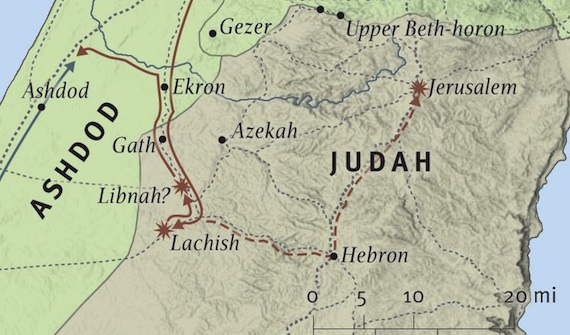
(Sennacherib’s campaign, from Crossway ESV Bible Atlas)
Sennacherib was so proud of his victory over Lachish that he commemorated the battle with a series of stone reliefs carved on the walls of his Nineveh palace. Portions of these reliefs are displayed today in the British Museum.
They still reveal the ferocity of the battle.
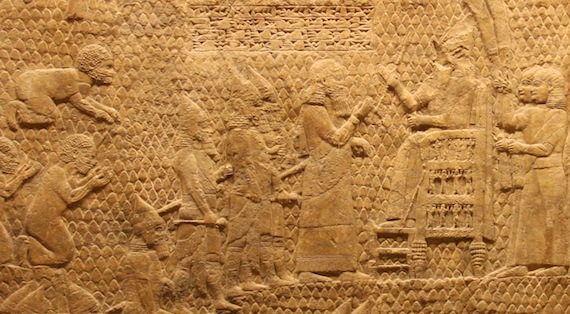
(Photo: Sennacherib’s reliefs show Hebrews bowing in homage, by Cathy Stiles. British Museum)
Jeremiah’s Note and the Lachish Letters
More than a century later, during the ministry of Jeremiah, Nebuchadnezzar of Babylon invaded Judah and laid siege to its most important cites—including again, Lachish.
Jeremiah records that near the end of the invasion, only:
Jerusalem . . . Lachish and Azekah . . . remained as fortified cities among the cities of Judah. —Jeremiah 34:7
The archaeological discovery called the “Lachish Letters” support Jeremiah’s verse.
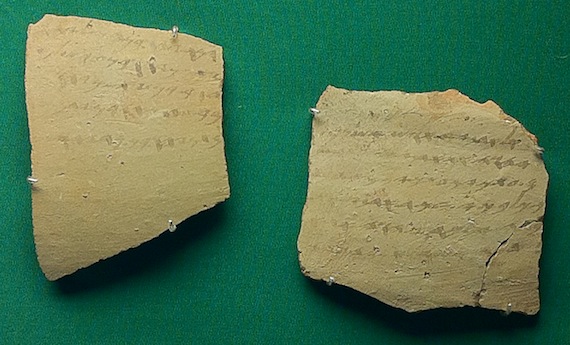
(Photo: The Lachish Letters, by Wayne Stiles. British Museum)
In 1935, archeologists digging in the guardhouse near the gate discovered eighteen ostraca (inscribed pottery shards) with ancient Hebrew inscriptions. These words included a draft letter to Jerusalem that harmonizes with Jeremiah 34:7:
We are watching over the signal of Lachish . . . for Azekah is not to be seen. —Lachish Letter #4
Today, the Gate Area remains the best way to enter the tell. The ramp ascends slowly to the north and passes an outer and inner gate, the largest extant in Israel. Just inside the gate, an interpretive sign reveals the location of the discovery of the Lachish Letters.
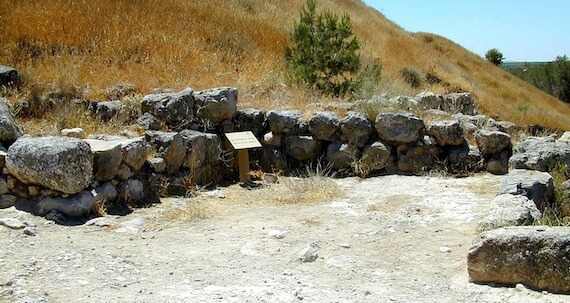
(Photo: Lachish gatehouse where Lachish Letters were found, courtesy of Pictorial Library of Bible Lands)
The Siege Ramp
The earthen siege ramp erected by the Assyrians still leans against the tell today and remains the only excavated siege ramp in near eastern antiquity. The mobile picks from Sennacherib’s battering rams destroyed the outer gate’s western wall.
As the pictures of the slideshow alternate below, compare the photograph of the siege ramp today with the picture of me pointing to the Assyrians scaling the ramp with arrows and the battering ram.
[slideshow id=29]
(Siege ramp pic courtesy of the Pictorial Library of Bible Lands)
More than a thousand iron arrowheads were discovered at the siege ramp, giving silent testimony to the savagery of the battle.
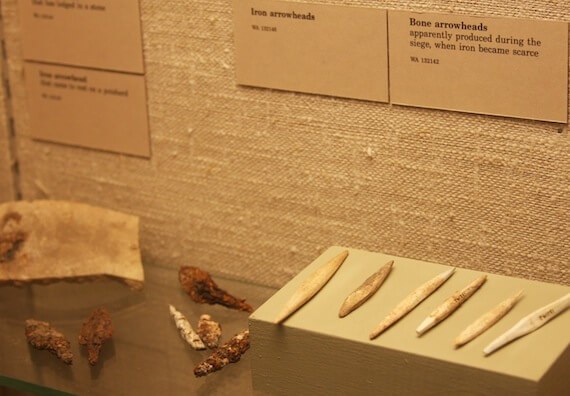
(Photo: Arrowheads found at the Lachish siege ramp, by Cathy Stiles. British Museum)
Look at the sling stones discovered at Lachish. They are as big as my hand!
Imagine the damage they could do to a skull.

(Photo: Sling stones from Lachish, by Cathy Stiles. British Museum)
The archaeology at Tel Lachish combines perfectly with biblical history to weave a unified story, supporting what the Bible says.
In my next post, I’ll share a devotional about Lachish. In the mean time here’s a question . . .
Tell me what you think: Would our faith still be credible if history didn’t support it? To leave a comment, just click here.
Lachish on the Map:
Want To Tour The Bible Lands From Wherever You Are?
Embark on an immersive, online journey through the sites of the Bible with Wayne Stiles and Walking the Bible Lands. Click below to learn more:

